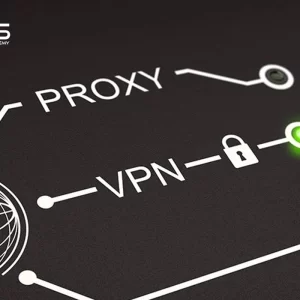Course Description
This official ISACA Certified in Risk and Information Systems Control (CRISC) certification training and the CRISC online training courses provide you with in-depth coverage on the four CRISC domains: risk identification; IT risk assessment; risk response and mitigation; risk and control monitoring and reporting.
After completing CRISC certification training, you’ll know the ways that IT and enterprise risk management are key to an organization’s operations and strategy. If you are an IT professional, risk and control professional, business analyst, project manager, or compliance professional, our expertly designed CRISC certification training and CRISC online training courses will teach you to defend, protect, and future-proof your enterprise.
In our CRISC certification training or CRISC online training courses, you’ll cover all four domains of the ISACA CRISC exam and gain the knowledge and concepts required to obtain CRISC certification.
Course Objectives
By the end of either the CRISC certification training or CRISC online training course, you will master the four CRISC domains:
- IT Risk Identification
- IT Risk Assessment
- Risk Response and Mitigation
- Risk Control, Monitoring, and Reporting
Course Outline
Domain 1 — IT Risk Identification
- Collect and review information, including existing documentation, regarding the organization’s internal and external business and IT environments to identify potential or realized impacts of IT risk to the organization’s business objectives and operations.
- Identify potential threats and vulnerabilities to the organization’s people, processes and technology to enable IT risk analysis.
- Develop a comprehensive set of IT risk scenarios based on available information to determine the potential impact to business objectives and operations.
- Identify key stakeholders for IT risk scenarios to help establish accountability.
- Establish an IT risk register to help ensure that identified IT risk scenarios are accounted for and incorporated into the enterprise-wide risk profile.
- Identify risk appetite and tolerance defined by senior leadership and key stakeholders to ensure alignment with business objectives.
- Collaborate in the development of a risk awareness program, and conduct training to ensure that stakeholders understand risk and to promote a risk-aware culture.
Domain 2 — IT Risk Assessment
- Analyze risk scenarios based on organizational criteria (e.g., organizational structure, policies, standards, technology, architecture, controls) to determine the likelihood and impact of an identified risk.
- Identify the current state of existing controls and evaluate their effectiveness for IT risk mitigation.
- Review the results of risk and control analysis to assess any gaps between current and desired states of the IT risk environment.
- Ensure that risk ownership is assigned at the appropriate level to establish clear lines of accountability.
- Communicate the results of risk assessments to senior management and appropriate stakeholders to enable risk-based decision making.
- Update the risk register with the results of the risk assessment.
Domain 3 — Risk Response and Mitigation
- Consult with risk owners to select and align recommended risk responses with business objectives and enable informed risk decisions.
- Consult with, or assist, risk owners on the development of risk action plans to ensure that plans include key elements (e.g., response, cost, target date).
- Consult on the design and implementation or adjustment of mitigating controls to ensure that the risk is managed to an acceptable level.
- Ensure that control ownership is assigned to establish clear lines of accountability.
- Assist control owners in developing control procedures and documentation to enable efficient and effective control execution.
- Update the risk register to reflect changes in risk and management’s risk response.
- Validate that risk responses have been executed according to the risk action plans.
Domain 4 — Risk and Control Monitoring and Reporting
- Define and establish key risk indicators (KRIs) and thresholds based on available data, to enable monitoring of changes in risk.
- Monitor and analyze key risk indicators (KRIs) to identify changes or trends in the IT risk profile.
- Report on changes or trends related to the IT risk profile to assist management and relevant stakeholders in decision making.
- Facilitate the identification of metrics and key performance indicators (KPIs) to enable the measurement of control performance.
- Monitor and analyze key performance indicators (KPIs) to identify changes or trends related to the control environment and determine the efficiency and effectiveness of controls.
- Review the results of control assessments to determine the effectiveness of the control environment.
- Report on the performance of, changes to, or trends in the overall risk profile and control environment to relevant stakeholders to enable decision making.
Audience
Professionals in the following types of roles will benefit from CRISC certification training:
- Risk professionals with 3-5 years of experience
- Risk manager
- Security manager
- Business analyst
- IT manager
- Operations manager
- Information control manager
- Chief Information Security Officer
- Chief Compliance Officer
Prerequisites
It is recommended that participants have at least 3-5 years of previous experience in Risk Management.
Inclusions
With CCS Learning Academy, you’ll receive:
- 3 Day Certified Instructor-led training
- Official Training Seminar Student Handbook
- Real-world learning activities and scenarios
- Exam scheduling support*
- Enjoy job placement assistance for the first 12 months after course completion.
- This course is eligible for CCS Learning Academy’s Learn and Earn Program: get a tuition fee refund of up to 50% if you are placed in a job through CCS Global Tech’s Placement Division*
- Government and Private pricing available.*
*For more details call: 858-208-4141 or email: training@ccslearningacademy.com; sales@ccslearningacademy.com
FAQ
1. How long does it take to get a CRISC certification? The certification period is 3 years.
2. Which is better, CISM or CRISC? In terms of earnings, CRISC is a better certification to have than CISM. CRISC certified professionals generally earn between $132,000 and $152,000 annually.
3. Is CRISC an in-demand certification? Because of the ever-increasing number of cybersecurity breaches worldwide, CRISC certified professionals have become highly desired by employers.
4. How many times can I take the CRISC exam? You can attempt the CRISC exam four times in one 365-day period from the time of your first test (a rolling year).






